

An Elderhostel program at
Kerr Mansion
Carl Albert State College
Poteau, Oklahoma
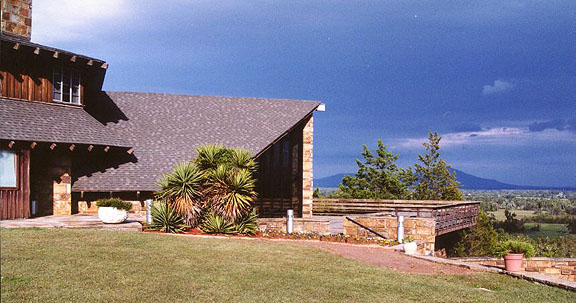
host location

overlooking the valley
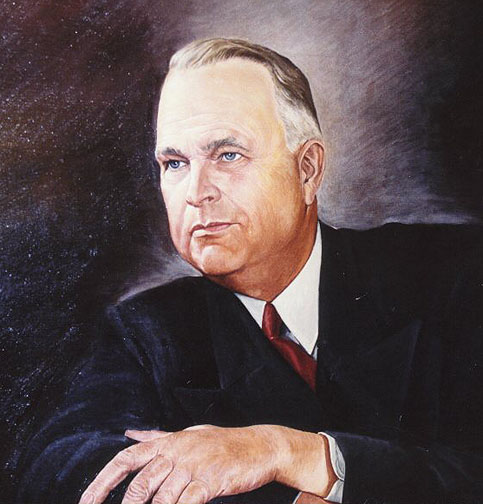
Senator Kerr
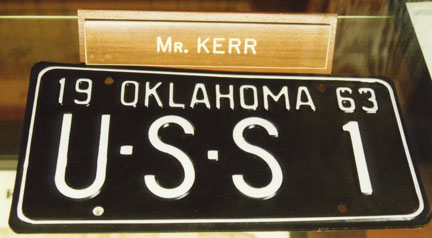
his license plate
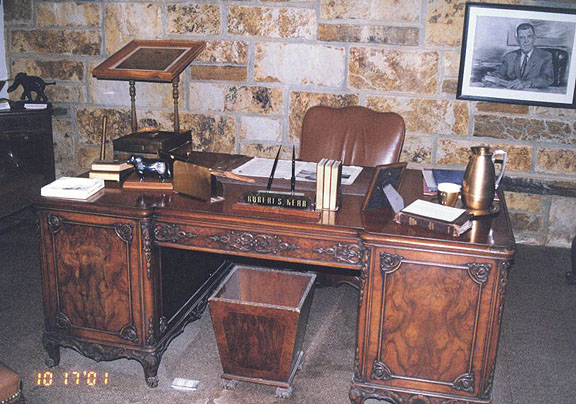
his desk now in his museum at the mansion
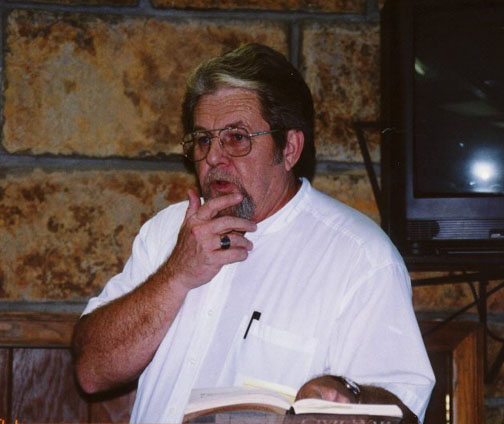
Davie
Spindle told us about the
Indian Territories and the American Civil War
Federal officials proceeded to negotiate removal treaties with each of the Five Civilized Tribes; in these treaties, the native peoples promised to give up their land in exchange for annual distributions of food or money and land in what is now Oklahoma. Treaties were usually negotiated with only a portion of the tribe, but the entire group was held to the agreement. In 1834 the federal government created what was called Indian Territory, lands west of the Mississippi River that originally included not only the area of present-day Oklahoma, but much of the area of present-day Kansas and Nebraska as well. Within Indian Territory, the treaties promised, tribal authority of the Native American nations was assured. A federal commission first secured pledges of peace with the Wichita, Kiowa, Comanche, and other native peoples already in the area of what is now Oklahoma. Beginning in the 1830s and continuing until 1842, the federal government began the forced removal of the eastern peoples to Indian Territory. The resulting Trail of Tears, as the Native Americans called it, uprooted tens of thousands of native people, and drove them (many in irons) into what is now Oklahoma. Among some native peoples as many as two of every five died along the way. This was particularly true of the Creeks, whose removal cost them two entire generations, both the very young and the very old.
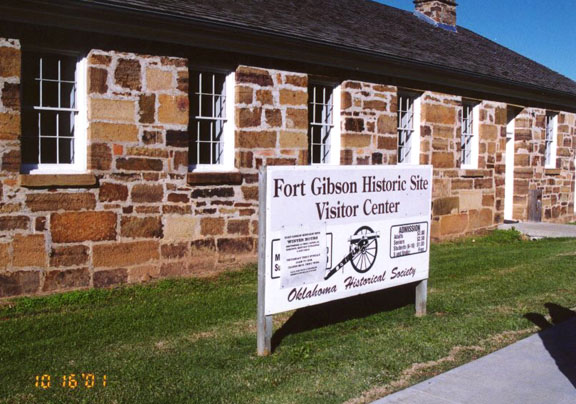
we traveled to Fort Gibson
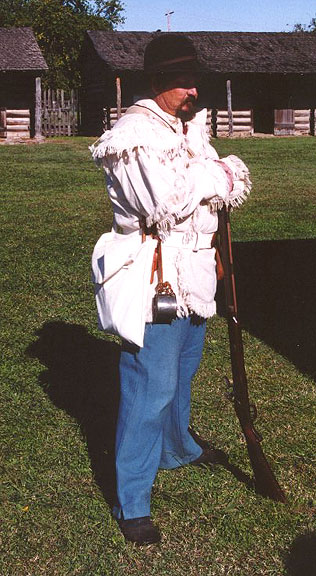
and
learned about life in the fort
(reenactor dressed as a mounted rifle soldier)
After the beginning of the American Civil War (1861-1865), leaders of the Five Civilized Tribes signed treaties committing their nations to the Confederate cause. The Five Tribes contributed men to the Confederate armies and received uniforms and equipment from Southern arsenals. The Choctaw-Chickasaw Regiment was commanded by Douglas Cooper and Tandy Walker. John Jumper and Chilly McIntosh headed the Creek-Seminole Confederate forces, and Stand Watie, the only Native American to become a general during the Civil War, commanded the Confederate Cherokee Mounted Rifles. However, many individual Cherokees, Creeks, and Seminoles supported the Union.
In the West, Native American units under Watie fought at Wilsonís Creek and Pea Ridge; later Watie periodically attacked Union positions as far north as Fort Scott in Kansas and Neosho in Missouri, although most engagements involving Native American troops were fought in Indian Territory. Watie surrendered at Doaksville in the Choctaw Nation on June 23, 1865, the last Confederate general to do so.
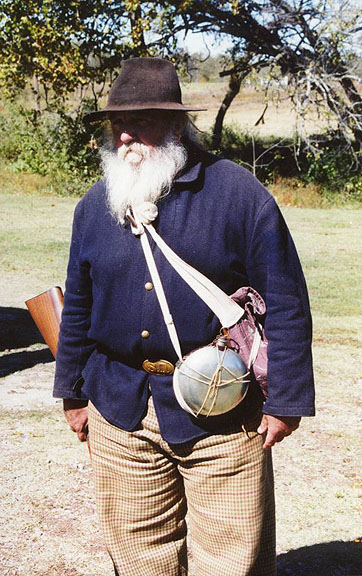
we went to
Honey Springs
an American Civil War battle site
and were told about the events of the battle by this reenactor
Other Photos from Honey Springs Battlefield
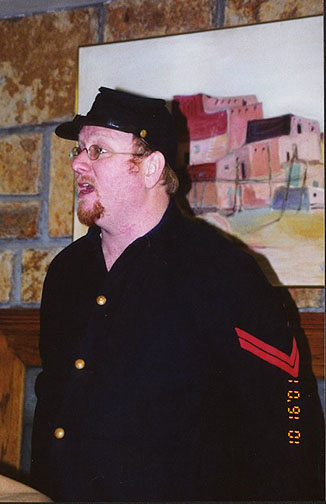
Tom Wing,
National Park Service, Fort Smith
told us of the American Civil War
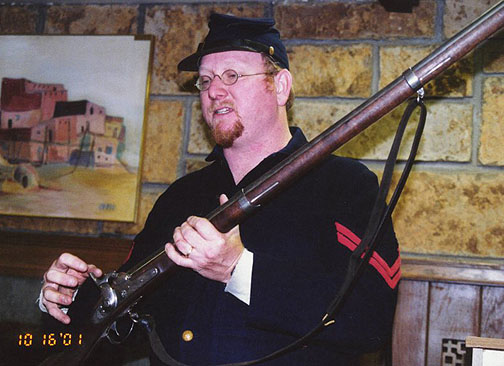
showed us muskets used by the Confederate forces
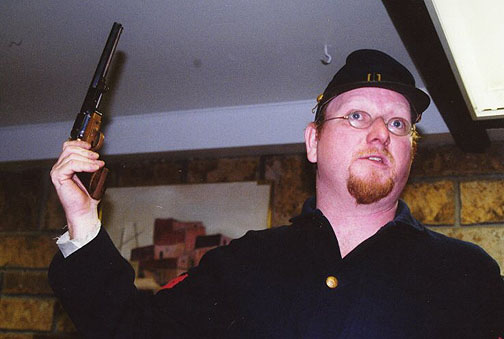
a cavalry pistol
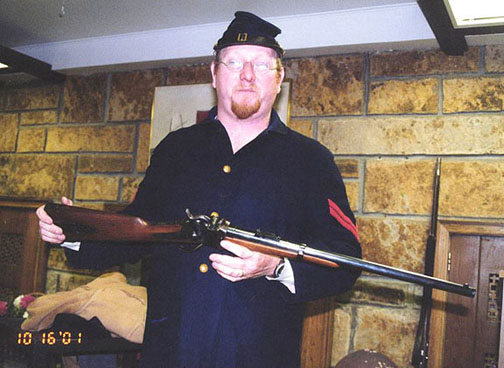
and the rifles used later by Union forces
More Photos from Historic Fort Smith, Arkansas
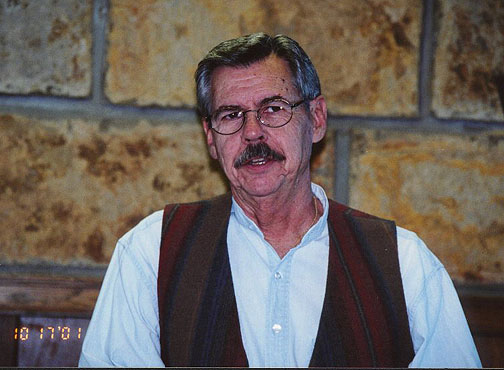
Orville Knight told us about Outlaws and Lawmen
The Civil War in Oklahoma left few homes standing, and the loss of personal property, livestock, and equipment caused widespread poverty. Tribal governments, divided and weakened, were unable to maintain order, and lawlessness flourished. White criminals from neighboring states used Oklahoma as a base from which to raid banks, trains, and stagecoaches all across the Southwest. Some of the more notorious outlaws who used Indian Territory hideouts were Frank and Jesse James and the Younger brothers, and Belle Starr. Unable to cope with the disorder caused by these intruders, tribal leaders appealed to the U.S. government, which built a federal district court at old Fort Smith, Arkansas. An army of deputy marshals scoured Indian Territory, rounding up outlaws, and Isaac C. Parker in Fort Smith became known nationally as the "hanging judge."
More Photos of Judge Parker, and his court
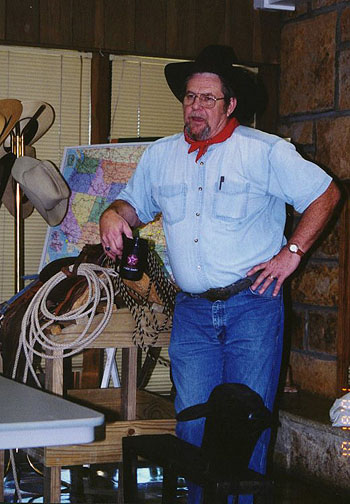
Cowboy Davie told us about life on the ranch
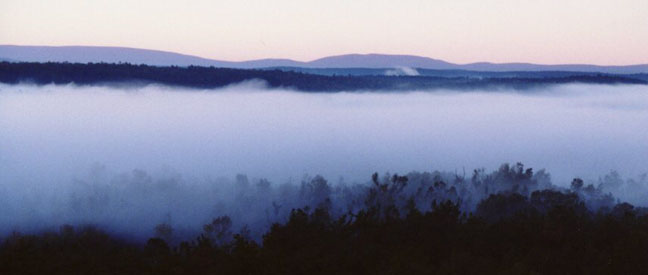
early
morning clouds over the valley
as seen from the Kerr Mansion
Text from Microsoft Encarta
![]()
![]()